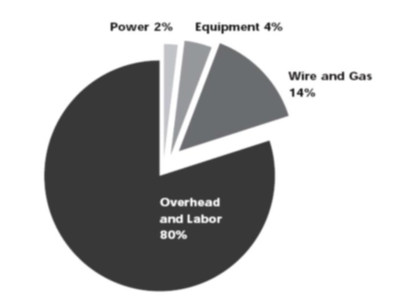Robot vs manual welder
When comparing the output of a welding robot with manual welding, it is important to take into account the duty cycle and overall equipment efficiency. A manual welder typically has a duty cycle of 15 to 20%, while a robot system must achieve at least an overall equipment efficiency of 80% and a duty cycle of the robot programs of 65%. This means that the welding robot can operate for longer periods of time and at a higher efficiency than a manual welder.
To calculate the output of a welding robot compared with manual welding, you can use the following formula: (Robot Duty Cycle Robot Overall Equipment Efficiency) / Manual Welder Duty Cycle. Using the values you provided, this would be (65% 80%) / 15% = 347%. This means that the welding robot can produce 3.47 times more output than a manual welder, assuming the same level of quality.
It is important to note that this is a rough estimate and the actual output may vary depending on several factors such as the complexity of the welding task, the skill of the manual welder, and the efficiency of the robot system.
The availability of skilled manual welders is becoming a problem for many companies. As a result, more companies are receiving orders that they cannot fulfill due to a lack of capacity in manual welding. This is driving the need for automation with welding robots. Automation with welding robots is not just a choice, but a necessity for many companies. It is only a matter of time before more companies adopt this technology to keep up with demand and remain competitive. Automation with welding robots can help increase productivity, improve quality, and reduce costs.

